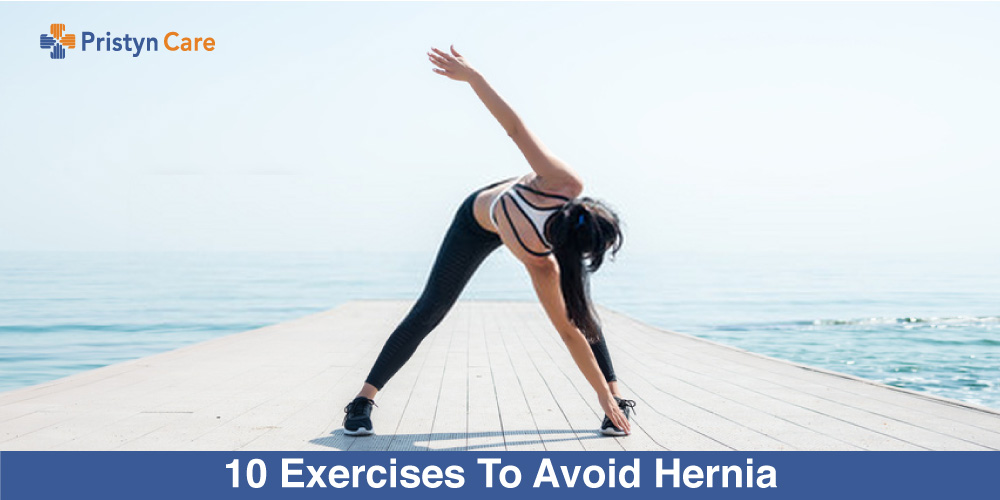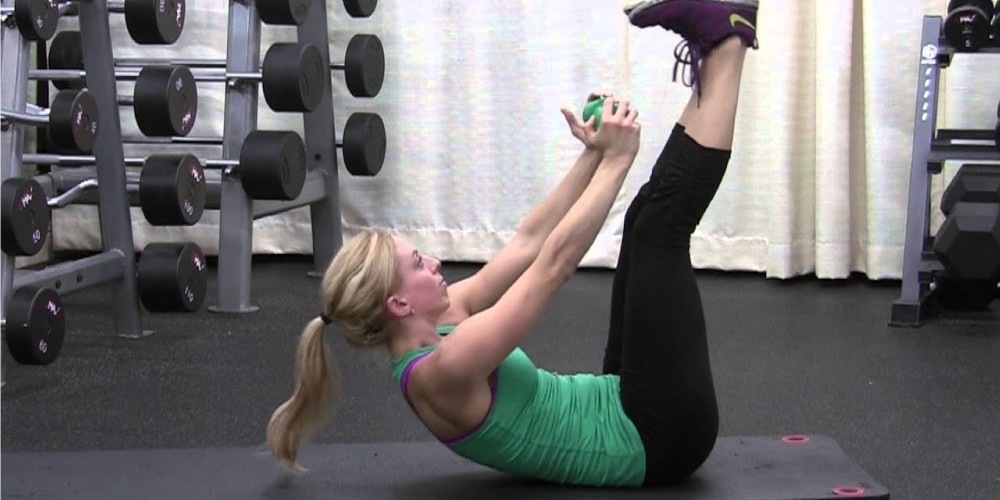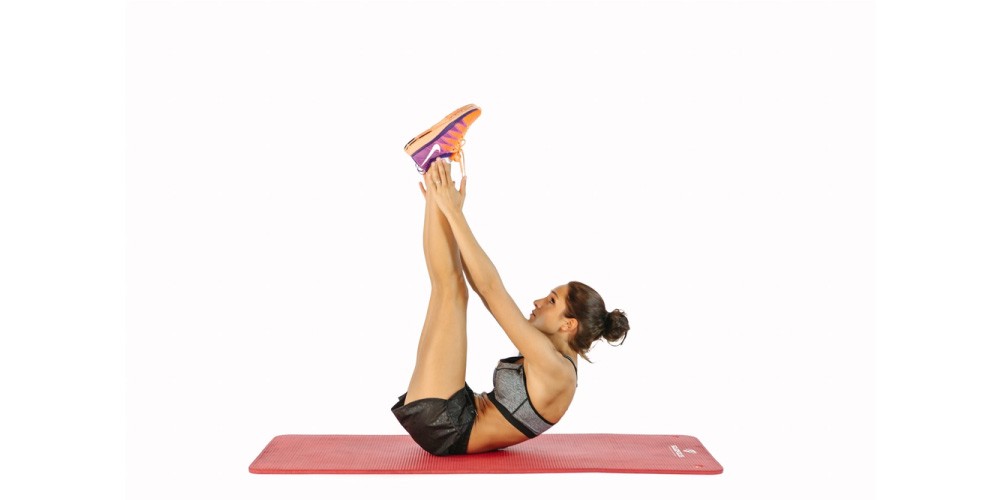
There are some core exercises and hip exercises to strengthen the middle body section to prevent hernia. Hernia is a common problem in the world whether it is India or the United States. Hernia occurs when the muscle mass of the body becomes weak and bulges out. The common causes of hernia are obesity, poor nutrition and weak abdominal muscles. Some exercises can help you maintain a healthy weight and make your muscles strong.
Table of Contents
Perform 10 Exercises To Avoid Hernia
Before you start exercising, it is important to warm up your muscles first. Warm-up may include neck rotation, neck tilts, shoulder rotation, arms rotation, waist rotation, spot jogging, ankle rotation, and so on.
Here are 10 exercises to avoid hernia that you can do at home –
1. Flutter Kicks
Lie down on your back on the exercise mat. Keep your hands by your side, palms straight flat towards the mat, back flat against the mat, and look up at the ceiling. Involve your core, lift both your legs off the ground and kick them up and down alternately. Do not let your feet touch the ground before you complete it. This is how you move by lying on your back and using your core to flutter your legs up and down. This strengthens your legs and abdominal muscles.

2. Seated Knee Tuck
Sit down with your knees flexed and feet flat on the mat. Place your hands behind and keep your palms flat. Get started with your cores, bend your elbows, lean back a bit, and lift your legs in the same flexed knee pose. Bring your knees close to your chest, and your upper body close to your knees. Lean back and push your legs away. Straighten your legs as you do it. Flex your knees and bring them close to your chest, and your upper body close to the knees.

3. Crunches
Sit down with your knees flexed and feet flat. Keep your feet together. Rollback until the back of your shoulders touches the mat. Do not rest your head on the mat. Employ your body strength (lower and upper) and place your fingertips behind the head to support it. Keep your elbows out, arms wide open, and chest out. Keep the chin up. This is the starting position. Exhale and lift your head (do not push it) so now only the upper back is off the ground. Look at the top of your knees. Inhale and slowly go back to the starting position.

4. Bicycle Crunch
Lie on the floor, place your hands behind your head, and open your arms. Raise your head and your feet off the floor, flex your knees, and bring them close to your belly. Push the right leg back and extend it. Simultaneously, crunch up and try to touch your left knee with your right elbow. Fold your right knee. When you do it, push your left leg back and extend it fully. Do reverse now, try to touch your right knee with your left elbow.

5. Vertical leg crunch
Lie down straight on the floor and keep your arms by your side. Lift both your legs at 90 degrees from the floor. Lift your hands from the floor and try to touch your toes with the tip of your fingers. Inhale and go back down. Exhale and try to touch your toes with your fingertips.

6. Leg Raises
Lie down straight on your yoga mat. Place your thumbs under your hips, and raise your leg vertically. This is the starting position. Inhale and lower your legs slowly. Just before your heels touch the floor, raise them slowly. Exhale as you do so. It helps in burning calories and strengthening your core muscles.
Also read: Best weight loss food for fat burning

7. Plank
Get on all knees and hands like a kneeling position. Flex your elbows and place your forearm on the exercise mat. Extend your legs behind and feel the abdomen. Make sure your neck and spine are in a straight line. Do not bend or pike up. Keep your elbows right below your shoulders. Look down at the floor. Avoid any strain on your head and neck. Keep breathing. Hold this pose for 30-60 seconds. This will strengthen your spine and abdominal muscles.
Also read: 10 Home Remedies for Abdominal Pain

8. Plank Jacks
Assume the push-up position. Keep going and legs apart (waist apart distance). Keeping your upper body and hands still, move your legs apart (wider than shoulder-width) and then bring them back to the initial position. It is similar to the leg movement of jumping jacks in the plank position. This exercise helps you strengthen the muscles of both the upper and lower body. Adding plank jacks will help prevent hernia, increase core strength and stability, burn calories, and help reduce fat.

9. Cat and Cow Exercise
Get on all fours. Roll your shoulders back, keep your elbows right below your shoulders. Keep your back straight. Do not bend down your spine. Bend your spine and lookup. Hold this pose for 3 seconds. Slowly, lower your head, look down, and pike up your spine. This is a yoga asana known as Chakravakasana. Hold this pose for 3 seconds. It helps in improving body posture and balance.

10. Jackknife Crunch
Lie down on the exercise mat. Extend your hands overhead. Just feel the stretch. That is the starting position. Lift your legs and hands off the floor, crunch, and touch your feet with your hands. Slowly, lie down again and get back to the starting position. This will make the abdominal muscles strong and flexible. This exercise strengthens both lower and upper abdominal muscles.

Benefits of Muscle Strengthening Exercises
Other than preventing hernia, these exercises have the following advantages:
- Help you lose weight
- Improve abdominal muscle power
- Improve muscle coordination
- Prevent injury
- Help stabilize the torso
- Improve respiratory function
- Improve posture
- Stabilize the spine, ribs, and pelvis
Conclusion
Abdominal exercises are great for improving posture, balance, strength, and stamina. These are some of the best exercises to prevent hernia. If you are recovering from a stroke or surgery, make sure you have your doctor’s permission to start exercising. If you are doing it for a flat belly, you must also eat healthily.
All this will keep hernia at bay! For any more queries, you can talk to our hernia specialists by booking online consultation. You can also write to us below and one of our medical coordinators will get back to you as soon as possible.
Disclaimer: Tips mentioned in the blog are for information purposes only and should not be considered as professional medical advice. Always consult your doctor, trainer or a dietician before starting any fitness program or making any changes to your diet.
Suggested Articles :








